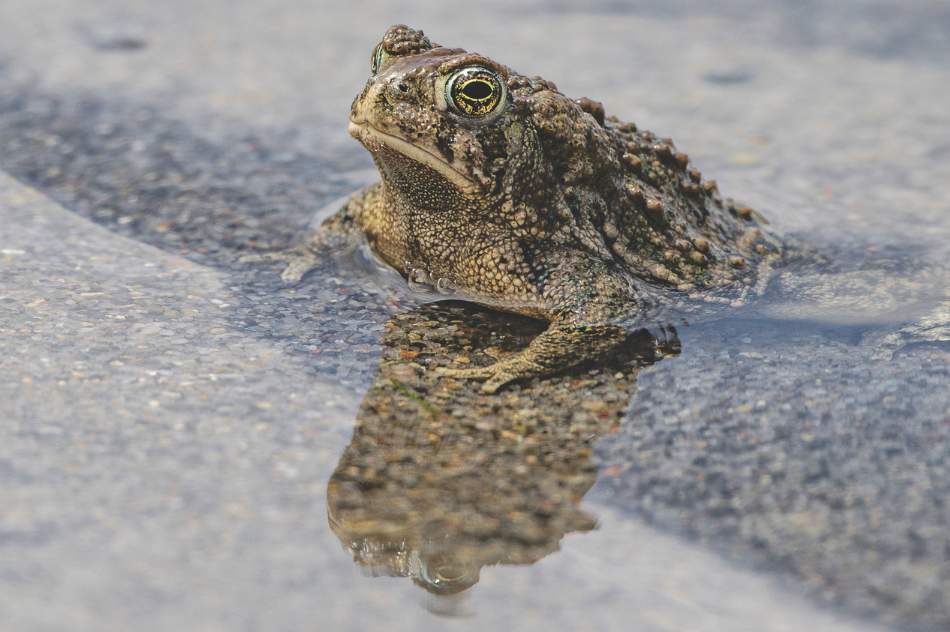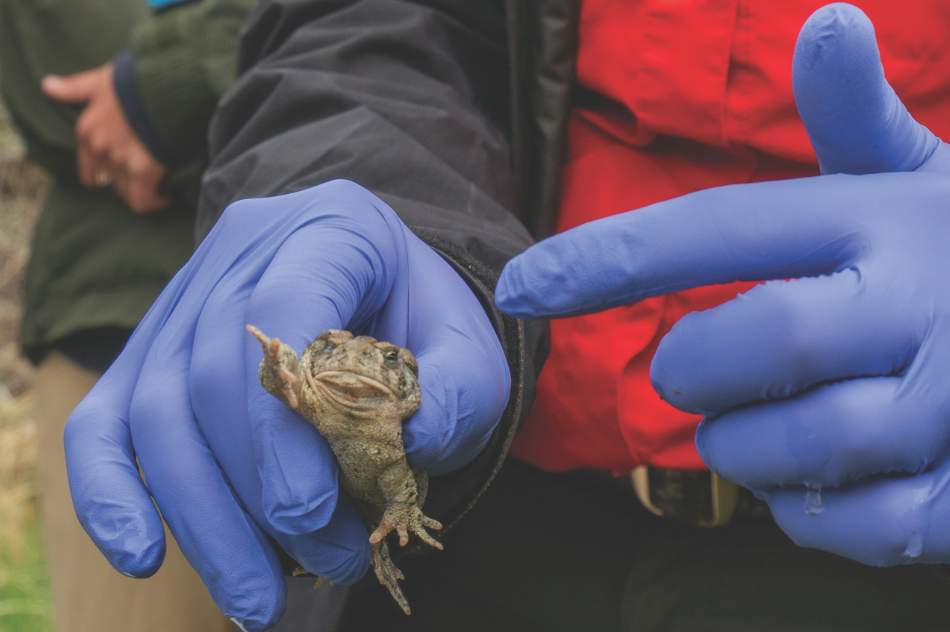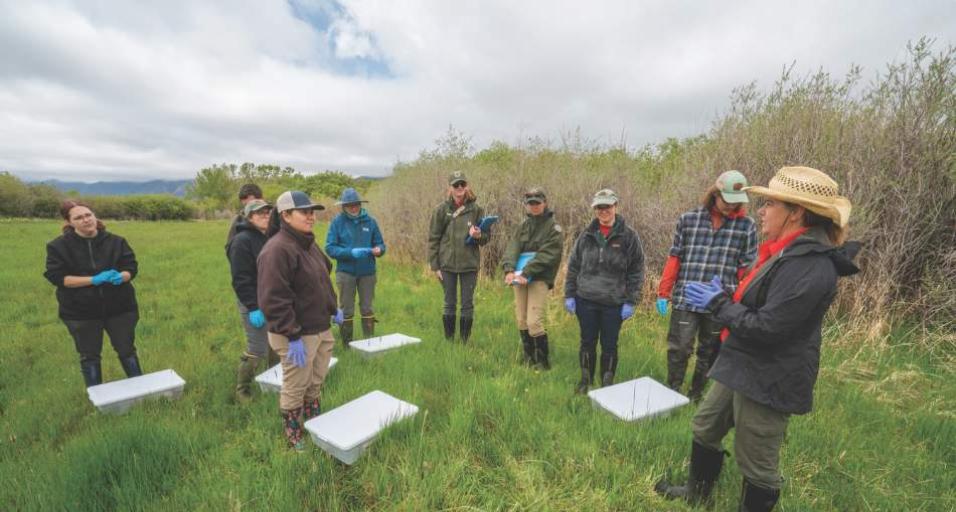On June 3, nearly 600 Wyoming toads were released at the Mortenson Lake National Wildlife Refuge in southeast Wyoming. The release was part of a larger effort to restore the endemic toad species to the Laramie Basin. The Wyoming toad was once abundantly found in the basin, but in the 1970s, an alarming population decline occurred. Shortly thereafter, they were listed as a federally endangered species and were believed to be extinct.
Fortunately, a single population of the Wyoming toad was rediscovered in 1987. However, the population crashed two years later. About two dozen individuals from this population were captured for captive breeding in the early 1990s. Unbeknownst to many, this small population has played a vital role in gaining first-hand knowledge about this native Wyoming species. Since the Wyoming toad is exclusive to the Cowboy State and extremely rare, it has been designated as a Species of Greatest Conservation Need.

The Wyoming toad is notably more aquatic than most other toads found in Wyoming and is extremely reliant on wetlands. (Photo by Patrick Owen/WGFD)
WHAT IS A SPECIES OF GREATEST CONSERVATION NEED?
Species of Greatest Conservation Need are certain species within Wyoming that warrant additional conservation attention.
There are also other Species of Greatest Conservation Need in Wyoming, including the black-footed ferret, Canada lynx, northern long-eared bat and Preble’s meadow jumping mouse. You can view the full list of Species of Greatest Conservation Need on the Game and Fish website.
All of these species are also included in Wyoming’s 2017 State Wildlife Action Plan, or SWAP. Wyoming’s SWAP summarizes the status of wildlife and fish within the state, provides a blueprint for conserving these species and their habitats and unlocks federal funding through the State and Tribal Wildlife Grants program.
Wyoming’s 2017 SWAP is currently under revision and will be released for public comment next year.
Because the Wyoming toad is listed under the Endangered Species Act, the federal government is the primary entity that manages the recovery of this species. However, Wendy Estes-Zumpf, herpetological coordinator for the Wyoming Game and Fish Department, said in addition to the U.S. Fish and Wildlife Service, the many partners that comprise the Wyoming Toad Recovery Team work tirelessly to save the species. These collaborators have been essential to facilitating recovery efforts such as captive breeding, annual releases and monitoring surveys at reintroduction sites.
“Collectively, this team is a great example of how multiple stakeholders, including private landowners, can work together to all contribute to species recovery,” Estes-Zumpf said. “There’s also a significant level of involvement and collaboration, as we often divide up tasks and exchange information.”
The road to recovery has not been easy.
One major threat to the Wyoming toad and other amphibians around the globe is amphibian chytrid fungus. Estes-Zumpf said Wyoming toads are one of the more susceptible species to a new hypervirulent strain of the fungus, and it can be detrimental to reintroduction efforts. Amphibians rely on their permeable skin to maintain a balanced internal environment. Chytrid fungus can restrict the permeability of their skin, preventing the normal movement of water, gases, electrolytes, etc., across the skin. Eventually the fungus can create an imbalance of fluids within the amphibian and lead to cardiac arrest.
“However, evidence suggests that some of the toads that have contracted the fungus but cleared themselves of it by basking and drying out may have greater resistance to it in the future,” Estes-Zumpf said.

Estes-Zumpf demonstrates the proper way to hold a Wyoming toad while prepping to release it. (Photo by Christopher Martin/WGFD)
To increase chances of survival and to supplement the wild population, the Wyoming Toad Recovery Team coordinates annual releases of captive-bred toads. These toads are a part of the Grow-Out Program, in which captive breeding facilities raise young tadpoles until they are 1 year old and then release them into their native habitat. Traditionally, Wyoming toad tadpoles have been used for reintroductions, but they have a high mortality rate. The Grow-Out Program has seen success by releasing older individuals.
“Recently, our survey data revealed an increase in population, not just from the annual release of individuals, but also through the offspring of previously released toads,” Estes-Zumpf said.
The releases would not be possible without the various captive breeding collaborators, which currently includes zoos, hatcheries and research facilities.
Estes-Zumpf noted how encouraging it is to have numerous invested stakeholders who have joined forces to help recover this small but significant species in the Wyoming landscape. The next time that you are near the Laramie Basin in Albany County, be sure to stay alert and tune your ears for the high-trilled call of the Wyoming toad.
“This species is so amazing. It is a local endemic species that has only ever occurred in our state — it truly is Wyoming’s toad,” Estes-Zumpf said.
– Hannah Qualm is a University of Wyoming fellow and is working with the Wyoming Game and Fish Department this summer.

